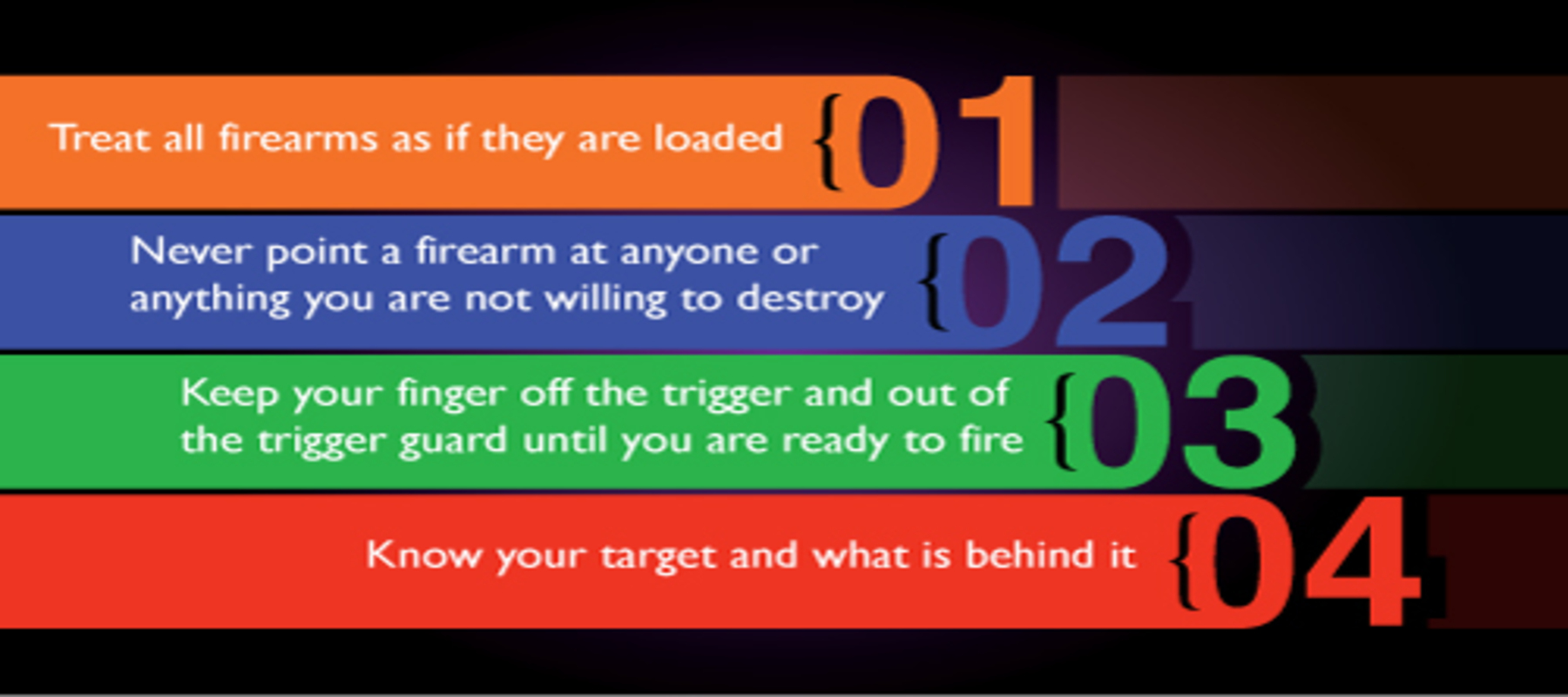Remember The 4 Universal Gun Laws
The four laws of gun safety are fundamental principles that every firearm owner, user, or instructor must understand and follow to prevent accidents and ensure responsible gun handling. Whether someone is a first-time shooter or a seasoned firearm instructor, these laws serve as the foundation of safe gun use. Let’s explore why knowing and following these laws is critical.
1. Treat Every Gun as If It Is Loaded This rule instills a mindset of constant caution. Many firearm accidents occur because someone assumed a gun was unloaded. By always treating a firearm as if it is loaded, even when one believes otherwise, users develop a habit of handling guns with respect and care. This mindset helps prevent negligent discharges, especially during training, maintenance, or casual handling.
2. Never Point a Gun at Anything You Are Not Willing to Destroy Muzzle discipline is a non-negotiable aspect of firearm safety. Keeping the gun pointed in a safe direction—whether holstered, resting, or in use—ensures that if a negligent discharge occurs, no one is harmed. Understanding this law reinforces awareness of surroundings, especially in crowded environments such as shooting ranges, self-defense scenarios, or instructional settings.
3. Keep Your Finger Off the Trigger Until You Are Ready to Shoot Most unintended discharges happen because fingers were placed on the trigger too early. This law emphasizes trigger discipline, ensuring that a firearm is only discharged deliberately. It prevents misfires caused by startle responses, loss of balance, or unexpected environmental factors. For firearm instructors, teaching and reinforcing this habit is crucial to preventing accidents during training.
4. Be Sure of Your Target and What Is Beyond It This law goes beyond simply aiming at a target—it requires a full understanding of what lies beyond and around the target. Bullets can penetrate barriers, ricochet, or travel long distances, posing a risk to unintended persons or property. Whether in self-defense, hunting, or training, every shooter must assess the environment to minimize risks.
THESE LAWS MATTER
Prevention of Accidental Discharges: rules collectively reduce the likelihood of accidental firings, which can lead to serious injury or death.
Firearm Training: Instructors must ensure that students internalize these principles, as unsafe habits can be difficult to unlearn.
Situational Awareness: Understanding these laws fosters better decision-making, particularly in high-pressure situations like self-defense or law enforcement operations.
Mastering these four fundamental laws isn’t just about memorization—it’s about habitual application.
For firearm instructors, enforcing these principles builds a culture of safety, respect, and responsible gun ownership.














